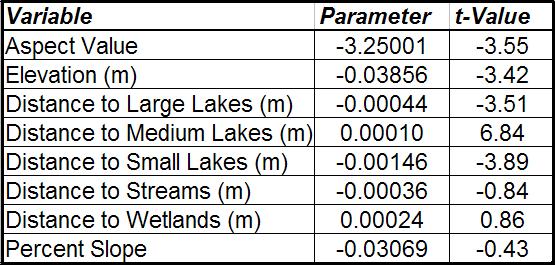
Table 1. Estimated multiple regression parameters and associated t-values.
Multiple Linear Regression
A multiple regression analysis was used to assess the feasibility of developing a predictive model that could be used to predict
the most likely location of over-mature forest based solely on topographic variables. The topographic variables included
slope, aspect, elevation and distance to various water features including lakes of different sizes, streams and wetlands.
Although a resulting r-square value of 0.007 indicated a model of virtually no utility, numerous significant relationships
between stand age and topographic features were identified. Aspect, elevation as well as distances to small, medium and
large lakes were all identified as being significantly related to stand age at the 90% level of confidence. Distance to stream,
wetlands and slope were all deemed insignificant in the regression results.
Overall, an older stand was slightly (although significant statistically) associated with a southern aspect, lower elevation,
shorter distances to large (>500ha) and small lakes (<100ha) and greater distance to medium lakes (100-500 ha).

Canonical Correlation Analysis
An investigation into the relationship between stand species composition and the topographic landscape
variables was conducted through the use of a canonical correlation analysis. It was anticipated
that the canonical correlation analysis would provide insight into the potential relationship between stand compositions
that are expected to represent late successional stages and the topographic landscape variables .
Two weakly correlated, yet statistically significant, canonical variate pairs resulted.

The first canonical variate had a correlation of 0.2655. The canonical variate representing species frequency
largely represented stands with a large component of jack pine (0.8731), a moderate component of black spruce (0.3009) and
no trembling aspen (-0.7328). The canonical variate representing landscape topographic variables largely represented stands
that are at higher elevations (0.9222), at a greater distance to large lakes (0.5505) and closer to small lakes (-0.4780)
and streams (-0.4066).
The second canonical variate had a correlation of 0.2104. The canonical variate representing species frequency largely
represented stands with a large component of white birch (0.7899), a lesser component of trembling aspen (0.4533) and no
black spruce (-0.6672). The canoncial variate representing landscape topographic variables largely represented stands
with greater slope (0.8989), and to a lesser degree higher elevation (0.3402) and greater distance to wetlands (0.2876).

